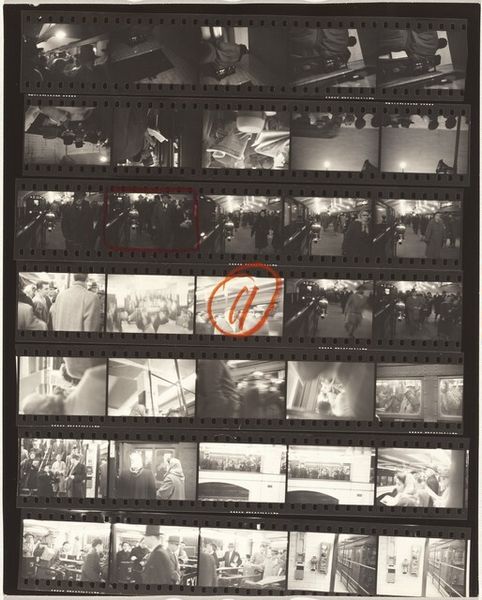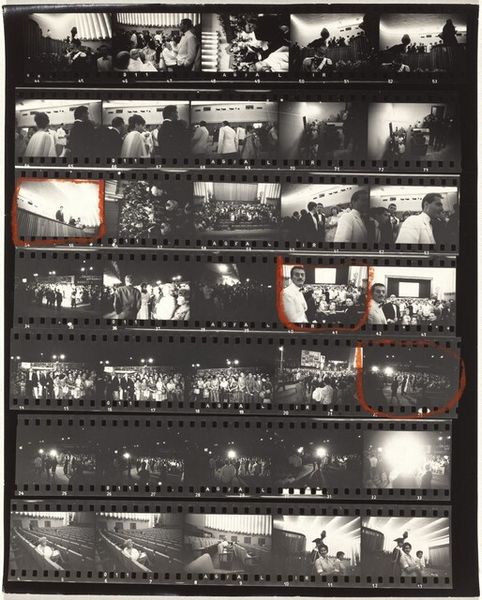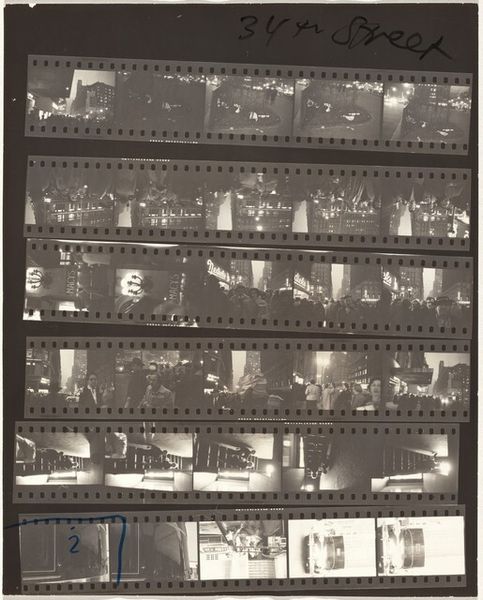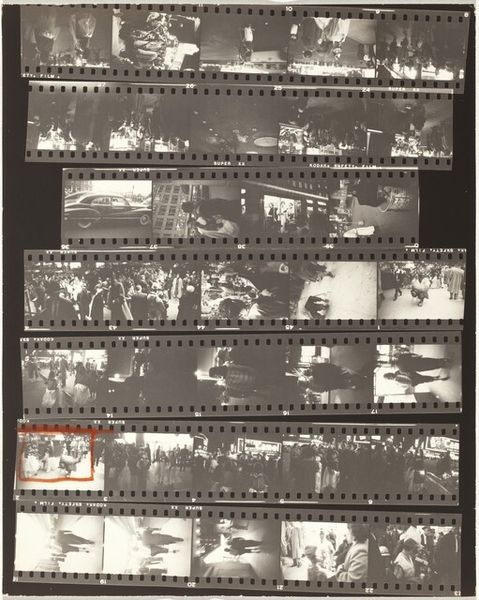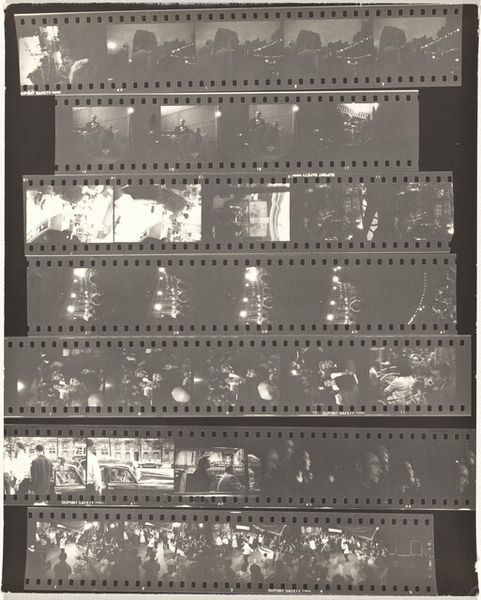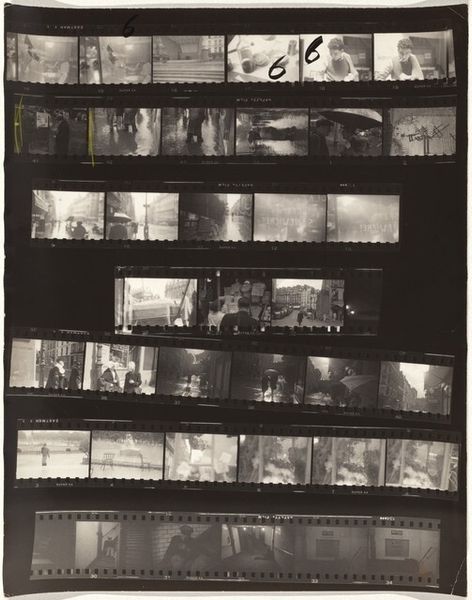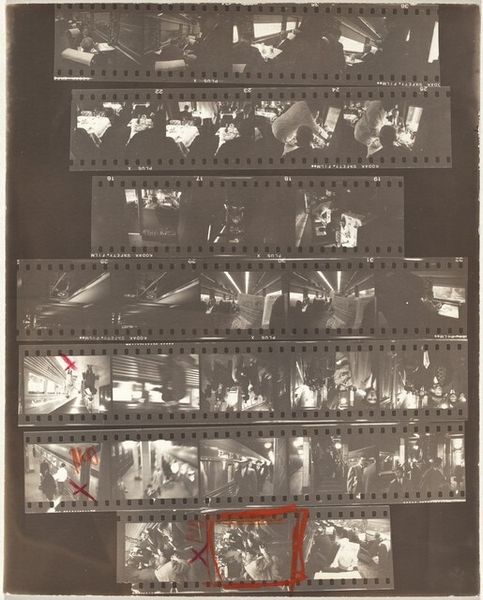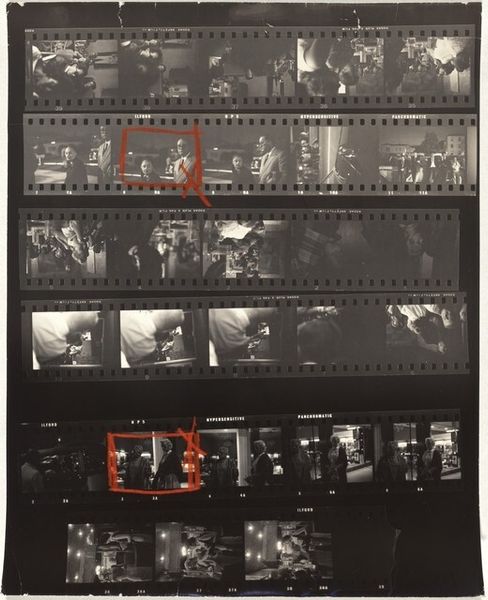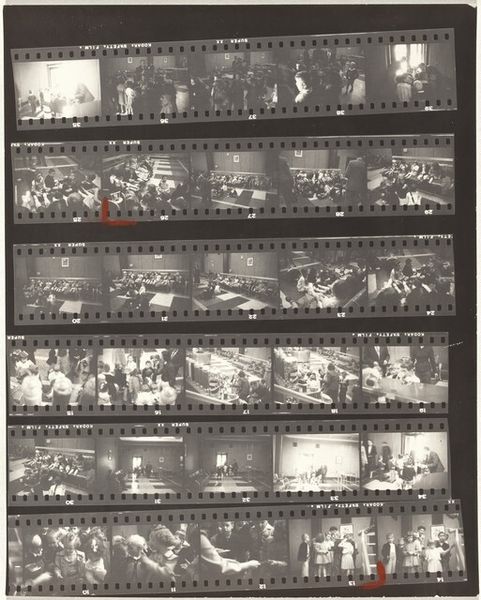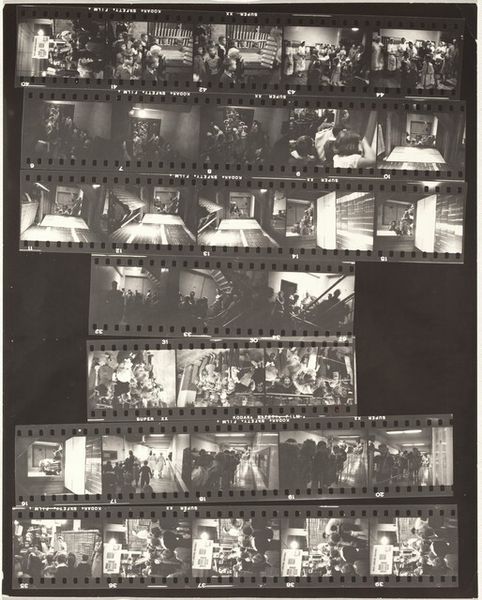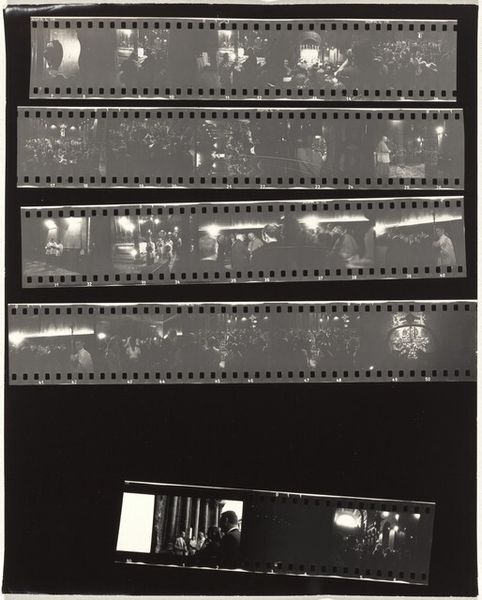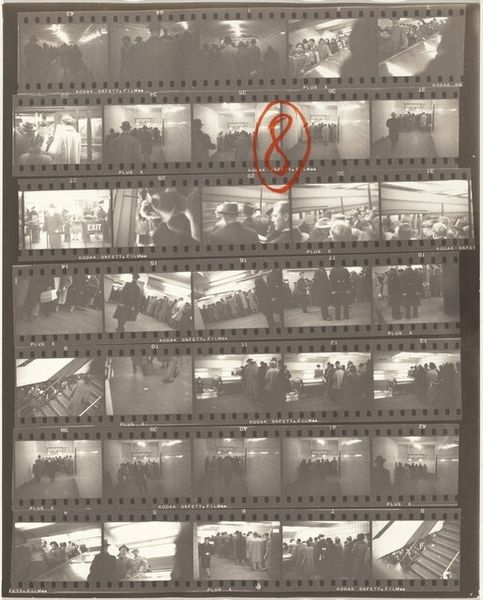
Party and Moore vs. Marciano--Museum of Modern Art no number 1955
0:00
0:00
print, photography, gelatin-silver-print
#
portrait
# print
#
social-realism
#
street-photography
#
photography
#
culture event photography
#
gelatin-silver-print
#
pop-art
#
history-painting
#
modernism
#
realism
Dimensions: sheet: 25.3 x 20.2 cm (9 15/16 x 7 15/16 in.)
Copyright: National Gallery of Art: CC0 1.0
Curator: This is "Party and Moore vs. Marciano--Museum of Modern Art no number," a gelatin silver print by Robert Frank, created in 1955. Editor: It feels like looking through someone's memories – fragmented, a little hazy, but with this strong sense of immediacy. All those filmstrip frames create such an intriguing layered narrative, don't they? Curator: Absolutely, that’s what struck me first too. You can see a progression; it’s more than a simple snapshot, and far from one perfect shot. There’s a beginning, middle, and probably more we can imagine beyond the visible frames. Editor: You can practically smell the aftershave and hear the polite cocktail chatter in those crowded shots. What kind of statement do you think Frank was trying to make, contrasting high society with maybe something grittier, more ‘real’? I feel it simmering. Curator: Well, Robert Frank often portrayed everyday life with a kind of brutal honesty and irony, and this is definitely in that vein. Look how he juxtaposes the boxing match – Moore vs. Marciano, an event of raw, physical conflict – with what appears to be an upper-class social gathering at the MOMA. The high and the low, presented together…almost like they happened in the same breath. Editor: Right? The cultural elite and popular entertainment…two sides of the American dream. Is he challenging who gets to be remembered, or considered culturally valuable? Boxing might be as important to working-class America as modern art is to another segment of society. Curator: Maybe it's as simple as observing how people behave in very different contexts, searching for something uniquely human amidst the stark contrasts. The compression of those realities is very pointed, but also rather delicate in the execution. Editor: You can read this photo as a critical take on class disparity, about who holds power and influence…But there's something so universal in how he captures people simply being. Do you think this could just be Frank's attempt at finding beauty in the mundane, in these tiny, everyday interactions regardless of background? Curator: Probably a bit of both. His brilliance lay in finding the extraordinary hidden within the ordinary, using those stark juxtapositions to provoke, but also to evoke…empathy? Maybe not, maybe he leaves us questioning everything. I leave feeling almost seasick by his cultural contrasts. Editor: Sea legs required. It reminds us that the world, then and now, is composed of overlapping stories, constantly interacting, often clashing. A great artwork indeed, in its challenge of perspective.
Comments
No comments
Be the first to comment and join the conversation on the ultimate creative platform.
